Numerical Calculation of the Performance of a Thermoacoustic System with Engine and Cooler Stacks in a Looped Tube
Abstract
:1. Introduction
2. Calculation Model
3. Evaluated Performance
3.1. Acoustically Transported Power
3.2. Efficiency and Coefficient of Performance
4. Numerical Method
4.1. Equations
4.2. Calculation Procedure
- The flow channel radii ( and ) of the engine and cooler stacks and the relative position of the cooler stack, , were set. It should be noted that the temperature of the hot end of the engine stack, , was determined as a result of the calculation, while temperatures ( and ) were fixed as follows: K and K.
- The stability limit condition under which the spontaneous gas oscillation becomes neutral was calculated by using the transfer matrix method [14] (This method is described in Appendix A in detail). As a result of this calculation, , , , and were obtained. It should be noted that, in this step, the values of the temperature gradient along the engine stack, the cooler stack, and the thermal buffer tubes were assumed as linear.
- The obtained combinations of pressure and velocity were used to calculate the acoustic power at the ends of the engine and cooler stacks, (, , , and ). Furthermore, the acoustical thermal power at the hot end of the engine stack and at the cold end of the cooler stack ( and ) were calculated by using the calculated and and Equation (11). It should be noted that the enthalpy flow along the engine stack and that along the cooler stack were already obtained in the third step.
5. Result and Discussion
5.1. Acoustic Field
5.2. Effect of the Relative Position of the Cooler Stack
5.3. Optimization of Radii in Stacks
6. Conclusions
Acknowledgments
Author Contributions
Conflicts of Interest
Appendix A. Transfer Matrix Method
References
- Yazaki, T.; Biwa, T.; Tominaga, A. A piston-less Stirling cooler. Appl. Phys. Lett. 2002, 80, 157–159. [Google Scholar] [CrossRef]
- Swift, G.W. Thermoacoustics A Unifying Perspective for Some Engines and Refrigerators; Acoustical Society of America: New York, NY, USA, 2002. [Google Scholar]
- Tominaga, A. Thermodynamic aspects of thermoacoustic theory. Cryogenic 1995, 35, 427–440. [Google Scholar] [CrossRef]
- Ceperley, P.H. A piston-less Stirling engine. J. Acoust. Soc. Am. 1979, 66, 1508–1513. [Google Scholar] [CrossRef]
- Timoumi, Y.; Tlili, I. Performance optimization of Stirling engines. Renew. Energy 2008, 33, 2134–2144. [Google Scholar] [CrossRef]
- Tlili, I. Finite time thermodynamic evaluation of endoreversible Stirling heat engine at maximum power conditions. Renew. Sustain. Energy Rev. 2012, 16, 2234–2241. [Google Scholar] [CrossRef]
- Tijani, M.E.H.; Zeegers, A.D.W.J.C.H. Design of thermoacoustic refrigerators. Cryogenic 2002, 42, 49–57. [Google Scholar] [CrossRef]
- Ueda, Y.; Bassem, M.M.; Tsuji, K.; Akisawa, A. Optimization of the regenerator of a travelling-wave thermoacoustic refrigerator. J. Appl. Phys. 2010, 107, 034901. [Google Scholar] [CrossRef]
- Rott, N. Damped and thermally driven acoustic oscillations in wide and narrow tubes. Z. Angew. Math. Phys. 1969, 20, 230–243. [Google Scholar] [CrossRef]
- Rott, N. Thermally driven acoustic oscillations part II: Stability limit for helium. Z. Angew. Math. Phys. 1973, 24, 54–72. [Google Scholar] [CrossRef]
- Tominaga, A. Fundamental Thermoacoustic; Uchidarokakumo: Tokyo, Japan, 1998. [Google Scholar]
- Swift, G.W. Springer Handbook of Acoustics: Thermoacoustics; Springer: New York, NY, USA, 2006; Chapter 7. [Google Scholar]
- Rott, N. Thermally driven acoustic oscillations, part III: Second-order heat flux. Z. Angew. Math. Phys. 1975, 26, 43–49. [Google Scholar] [CrossRef]
- Ueda, Y.; Kato, C. Stability analysis of thermally induced spontaneous gas oscillations in straight and looped tubes. J. Acoust. Am. 2008, 124, 851–858. [Google Scholar] [CrossRef] [PubMed]
- Swift, G.W.; Gardner, D.L.; Backhaus, S. A thermoacoustic Stirling engine. Nature 1999, 399, 335–338. [Google Scholar]
- Biwa, T.; Tashiro, Y.; Ishigaki, M.; Ueda, Y.; Yazaki, T. Measurements of acoustic streaming in a looped-tube thermoacoustic engine with a jet pump. J. Appl. Phys. 2007, 101, 064914. [Google Scholar] [CrossRef]
- Backhaus, S. A thermoacoustic-Stirling heat engine: Detailed study. J. Acoust. Soc. Am. 2000, 107, 3148–3166. [Google Scholar] [CrossRef] [PubMed]
- Bassem, M.M.; Ueda, Y.; Akisawa, A. Design and construction of a travelling wave thermoacoustic refrigerator. Int. J. Refrig. 2011, 34, 1125–1131. [Google Scholar] [CrossRef]
- Yazaki, T.; Iwata, A.; Maekawa, T.; Tominaga, A. Traveling wave thermoacoustic engine in a looped tube. Phys. Rev. Lett. 1998, 81, 3128. [Google Scholar] [CrossRef]
- De BloK, K. Muti-stage traveling wave thermoacoustics in practice. In Proceedings of the 19th International Congress on Sound and Vibration (ICSV 19), Vilnius, Lithuania, 8–12 July 2012; pp. 1–8. [Google Scholar]
- Tijani, M.E.H.; Spoelstra, S. A high performance thermoacoustic engine. J. Appl. Phys. 2011, 110, 093519. [Google Scholar] [CrossRef]
- Timoumi, Y.; Tlili, I.; Nasrallah, S.B. Design and performance optimization of GPU-3 Stirling engines. Energy 2008, 33, 1100–1114. [Google Scholar] [CrossRef]
- Gardner, D.L.; Swift, G.W. A cascade thermoacoustic engine. J. Acoust. Soc. Am. 2003, 114, 1905. [Google Scholar] [CrossRef] [PubMed]
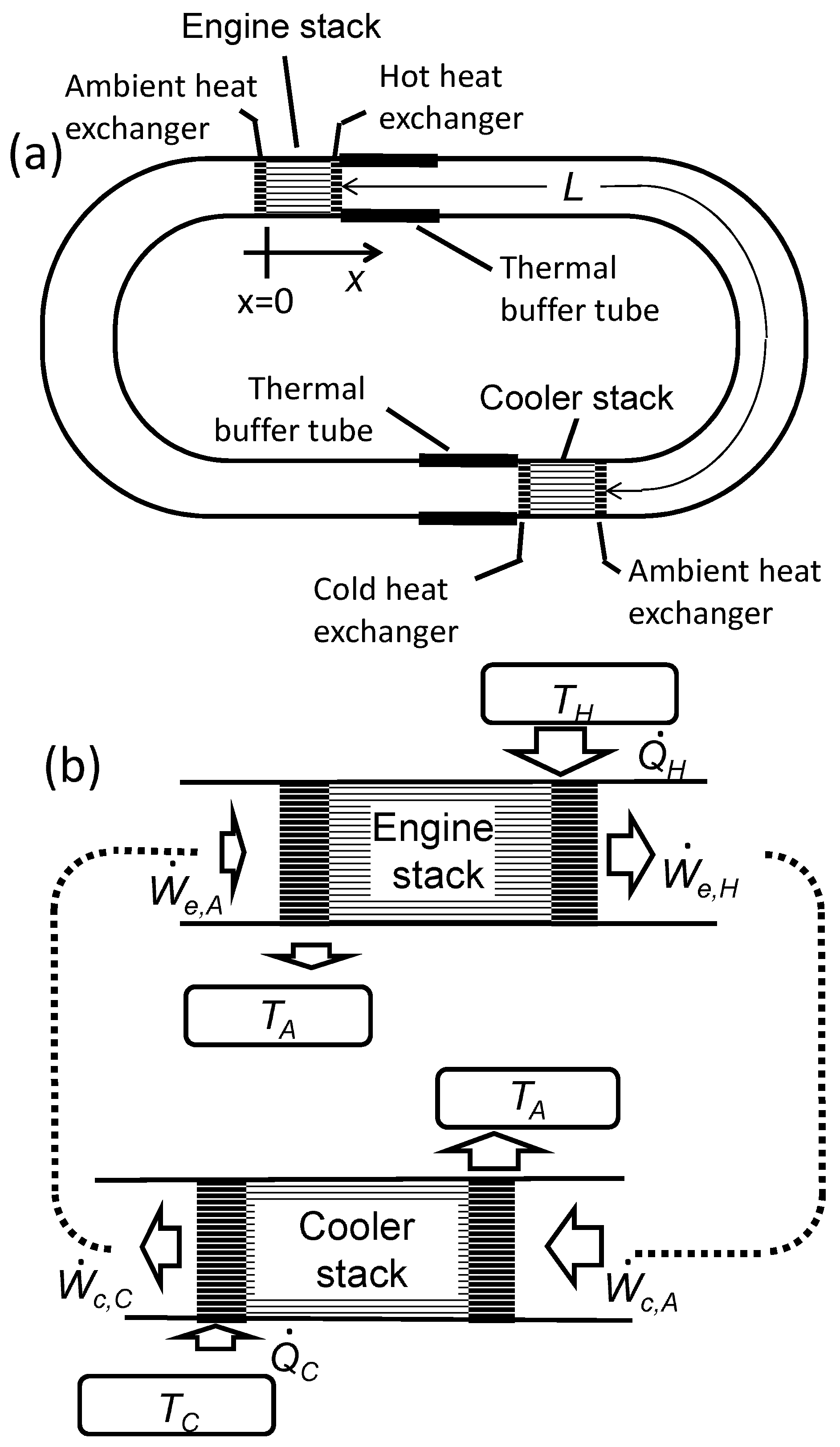
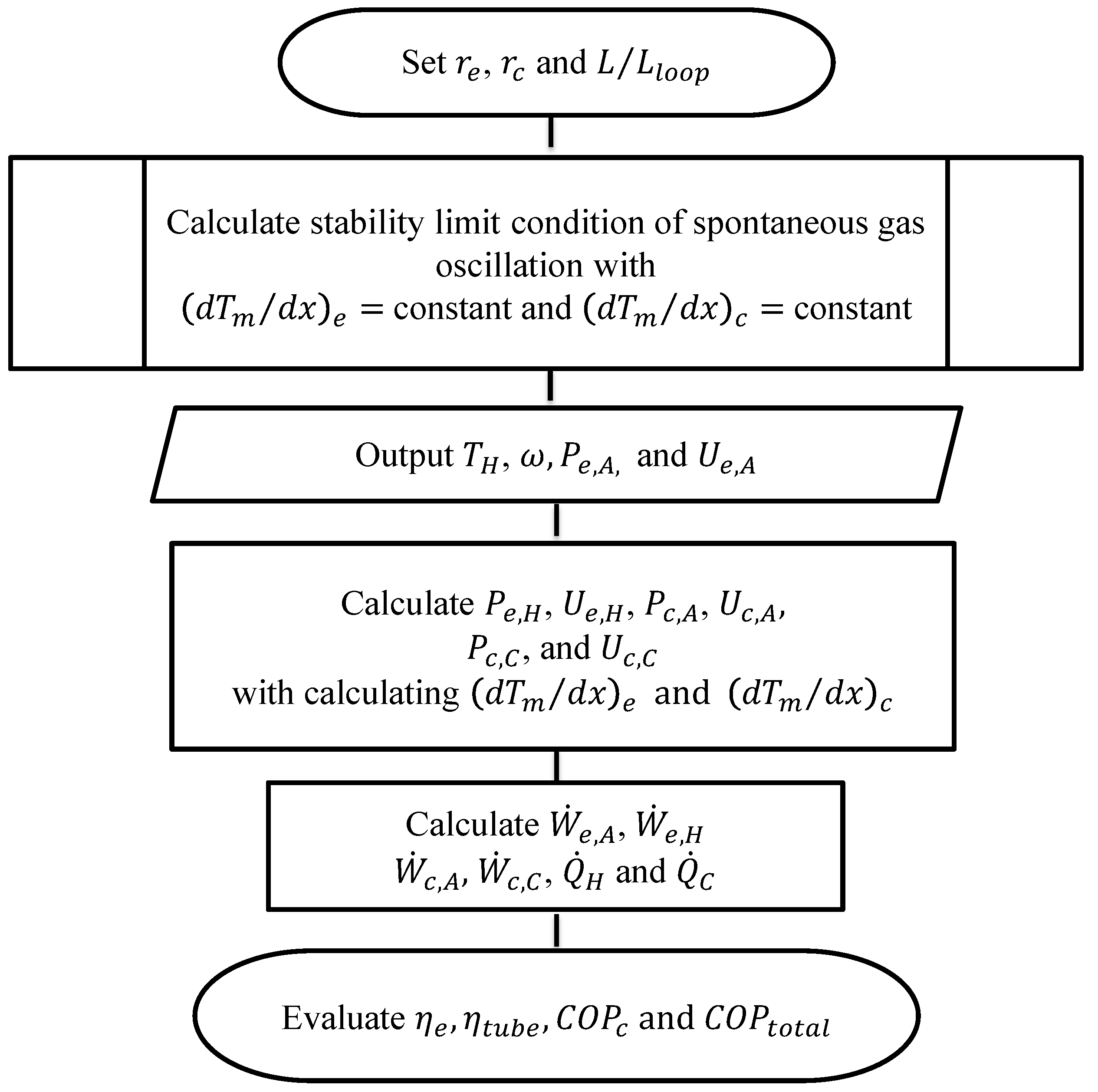
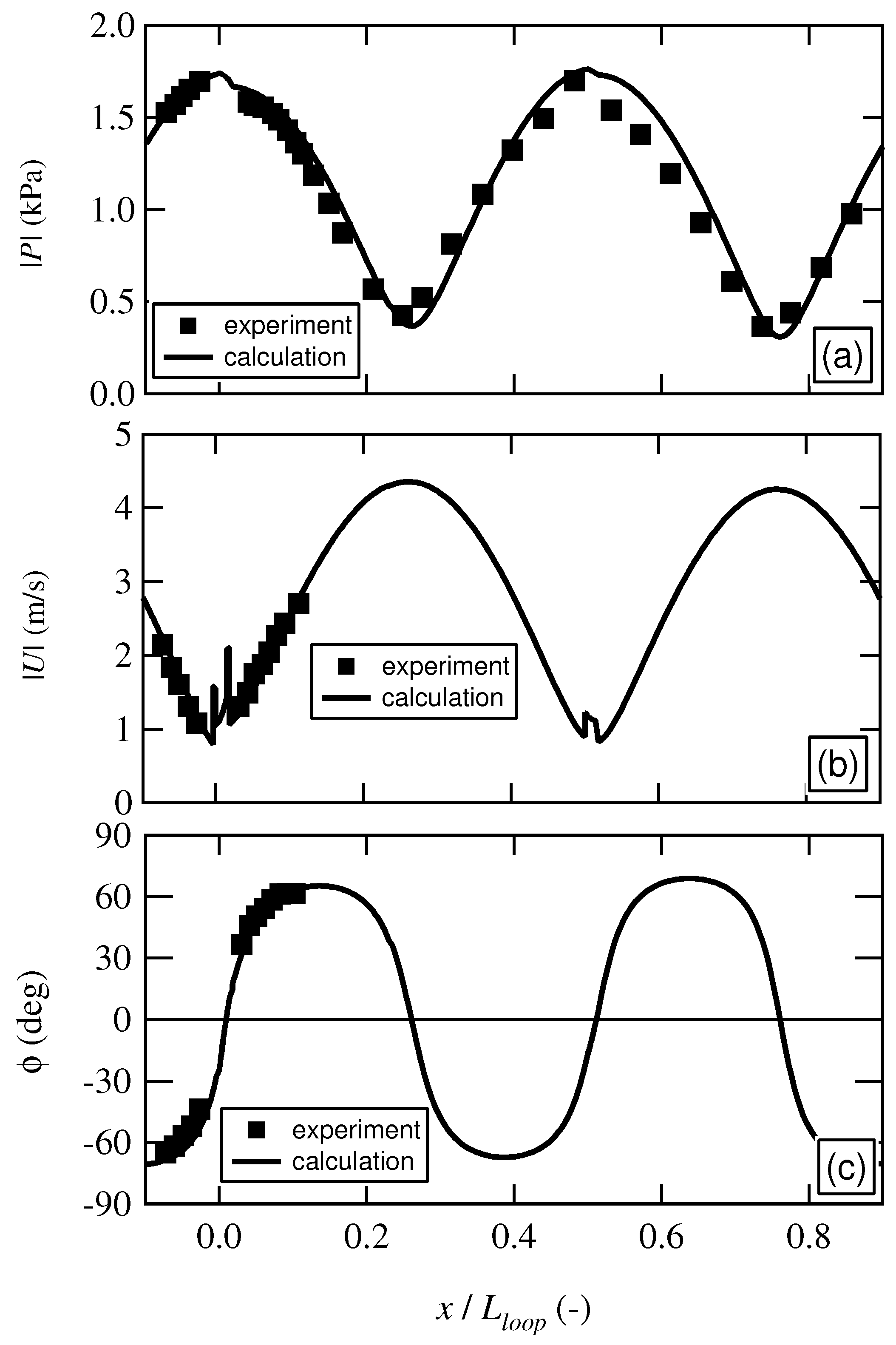
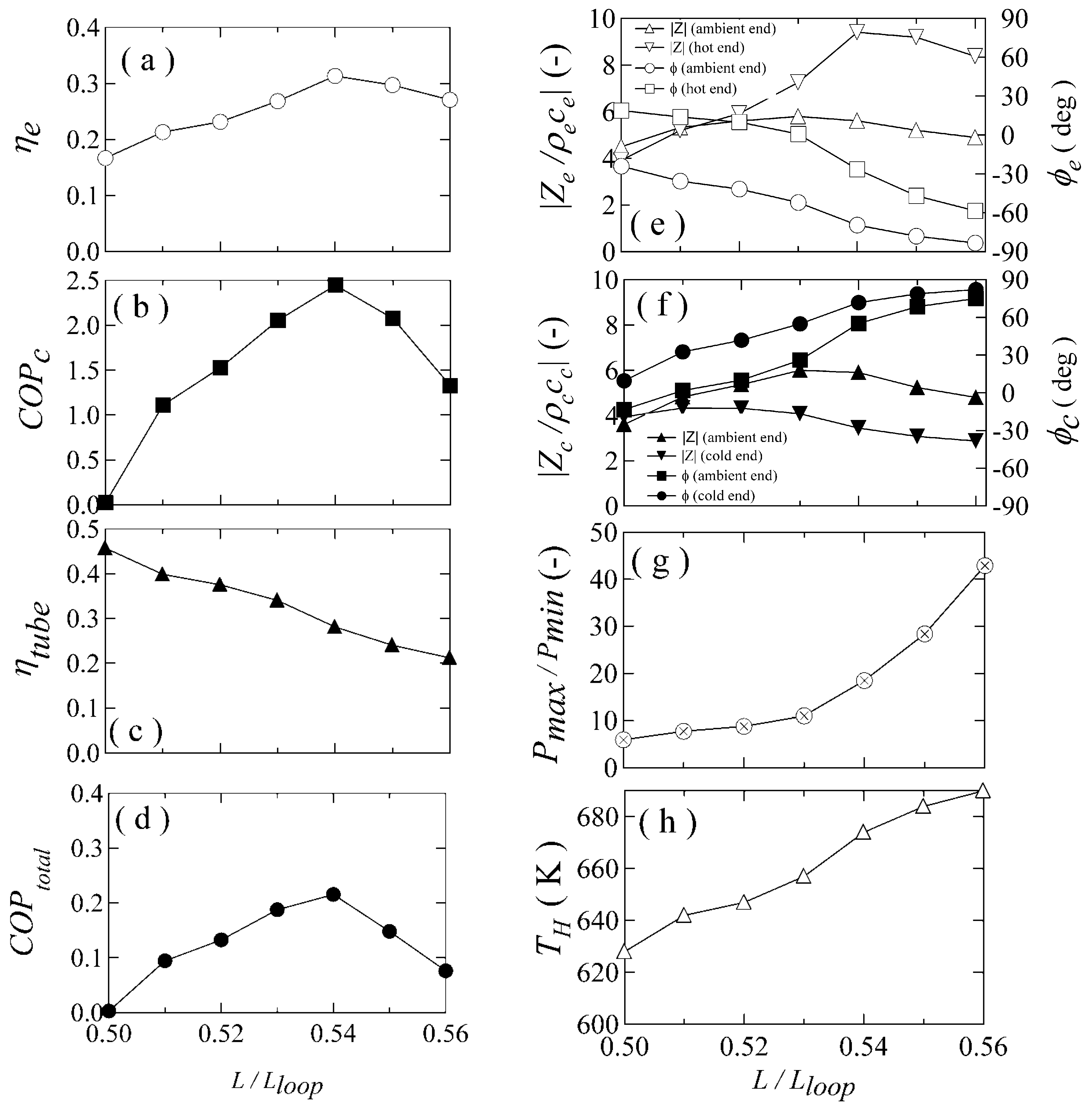
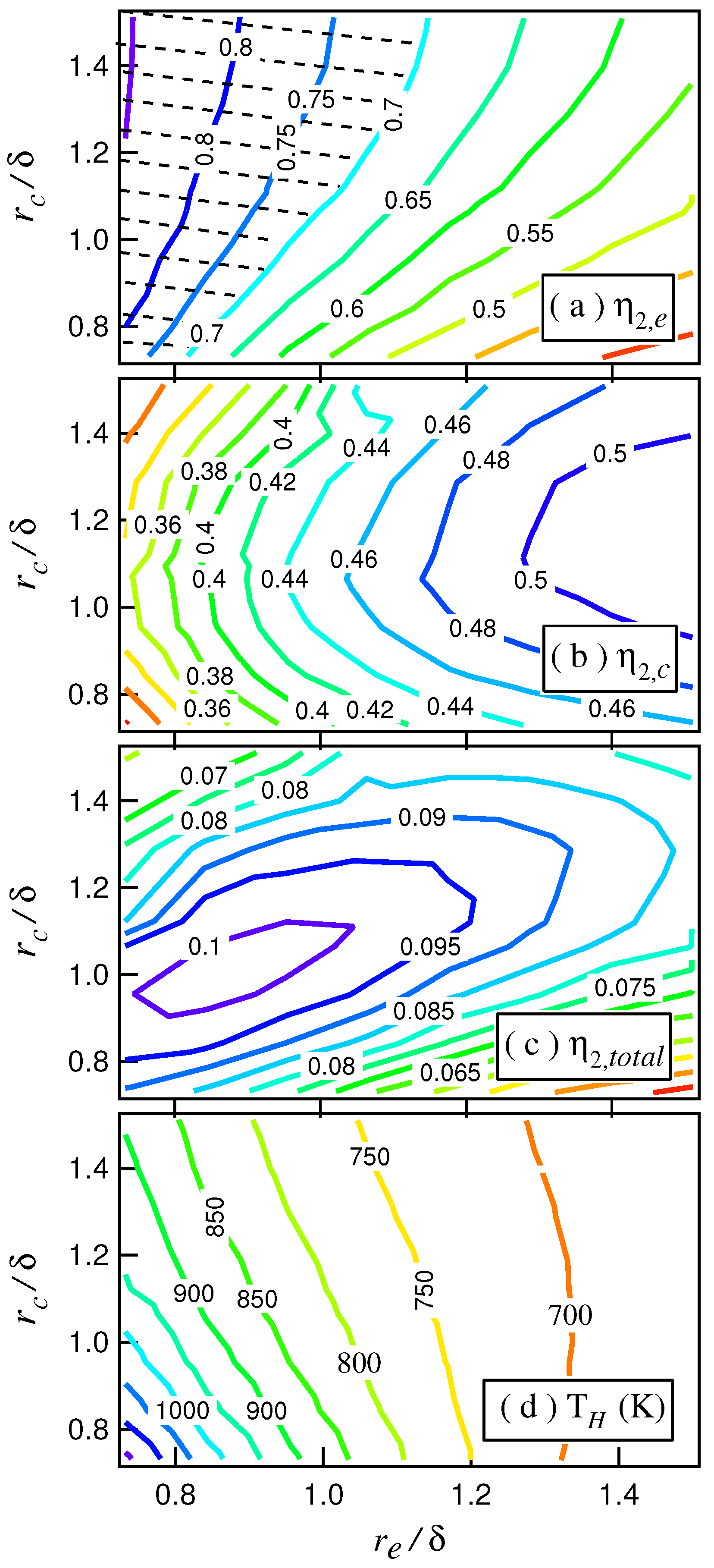
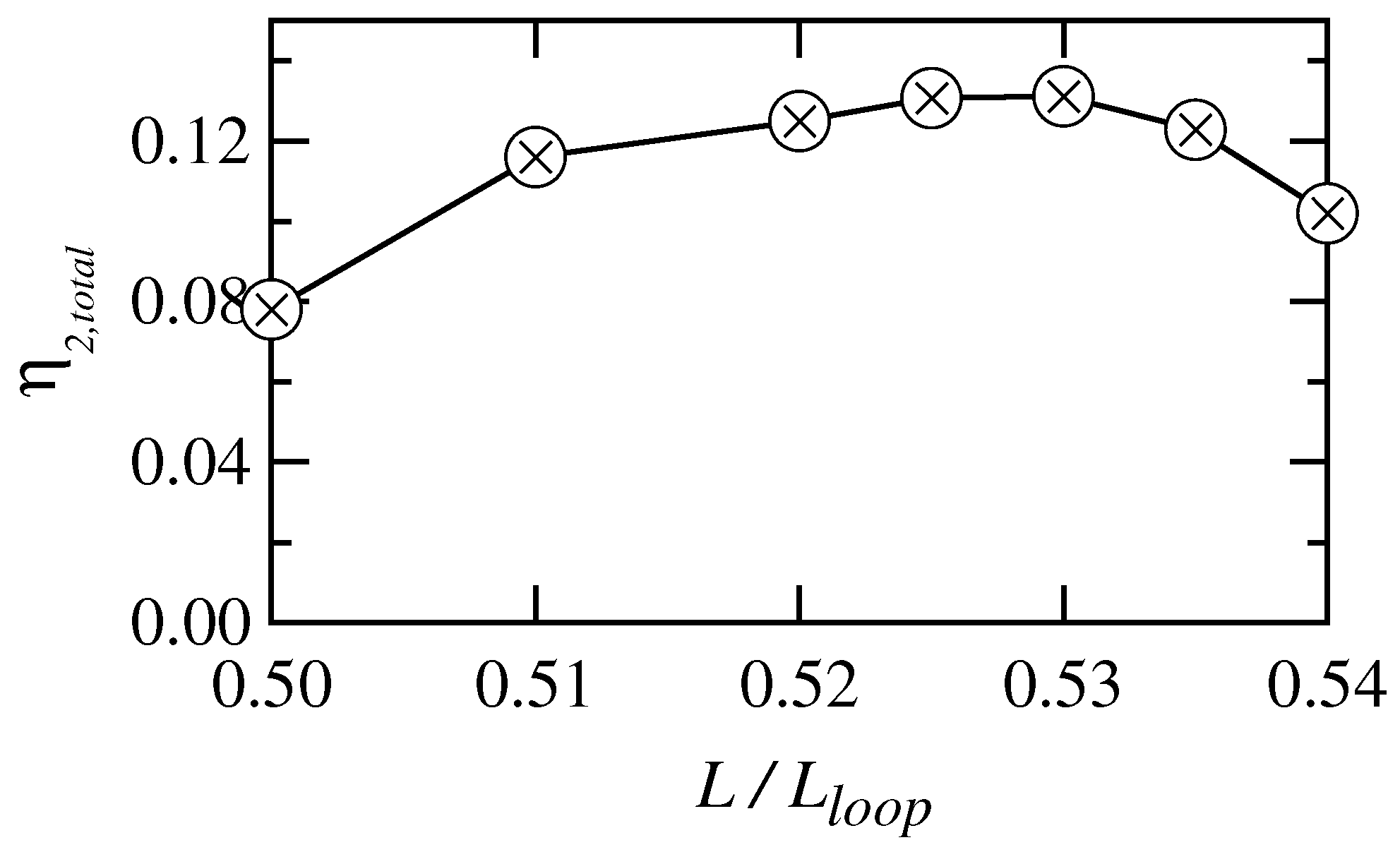
© 2017 by the authors. Licensee MDPI, Basel, Switzerland. This article is an open access article distributed under the terms and conditions of the Creative Commons Attribution (CC BY) license (http://creativecommons.org/licenses/by/4.0/).
Share and Cite
Farikhah, I.; Ueda, Y. Numerical Calculation of the Performance of a Thermoacoustic System with Engine and Cooler Stacks in a Looped Tube. Appl. Sci. 2017, 7, 672. https://doi.org/10.3390/app7070672
Farikhah I, Ueda Y. Numerical Calculation of the Performance of a Thermoacoustic System with Engine and Cooler Stacks in a Looped Tube. Applied Sciences. 2017; 7(7):672. https://doi.org/10.3390/app7070672
Chicago/Turabian StyleFarikhah, Irna, and Yuki Ueda. 2017. "Numerical Calculation of the Performance of a Thermoacoustic System with Engine and Cooler Stacks in a Looped Tube" Applied Sciences 7, no. 7: 672. https://doi.org/10.3390/app7070672




